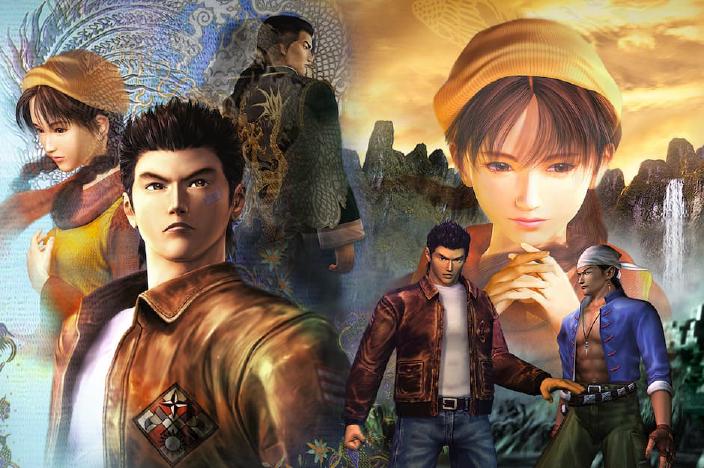Shenmue I & II: Impressive for the Early 2000s
While I wasn’t holding the controller for the entirety of these playthroughs, I did get to experience the HD remaster of Shenmue I and II. These two games are an amazing window to the past, but often feel dated despite the up-rez’d graphics.
Before I really dive into things, I think it is important to remember that what these games achieved in 1999 and 2001 respectively is nothing short of amazing. The first Shenmue game was fully voiced, featured a wide variety of gameplay mechanics, and was pretty massive in scope. To put that into context, Final Fantasy X was released two years after in 2001. While FFX was visually stunning and large in scope, it did not have complete voice acting. Shenmue II ratcheted the scope up in almost every way and still managed to have a completely voice acted game.
Technically these games were impressive. However not every bit of Shenmue holds up well in 2020. While the entire game is voice acted, the quality of the dialog and acting is poor. Most lines are delivered flat, and if the line isn’t delivered flat, then it is usually overacted. Still, despite the lack of quality, the voice acting does bring a certain level of charm that gives the games a very distinct character. Hearing Ryo repeat almost every piece of dialog as a question might seem annoying at first, but by the end of the game it becomes a part of his character.
The story has the player playing Ryo Hazuki, a young martial artist chasing down the man who killed his father, Lan Di. The story isn’t anything too outside what you would expect from your average kung-fu revenge story, and I can’t say that there is any real valuable plot payoffs during the first two games, but the story is serviceable. The first game takes place solely in Japan as Ryo attempts to learn more about the man who killed his father. Eventually he chases him across the sea to Hong Kong. The second game is much larger, and has Ryo visiting Hong Kong, Kowloon, and a slice of Guilin.
Honestly, the first game feels just about right in scope. The game feels large without being too large to confuse the player. You quickly memorize each area which helps immerse you in the game world. The second game is simply too large. Hong Kong, Kowloon, and Guilin all feel cheap. There is a lot of copy-pasta going on, and as a result, the stand out landmarks are too few and far between. Kowloon is the worst offender of this, with buildings being poorly designed in what feels like an attempt to extend the playtime of the game. As a result, Shenmue II isn’t fun to explore.

The games feel about the same to play, but Shenmue II does have a few quality of life improvements. For the most part you should be able to button mash your way through most fights with a handful of fights in each game requiring a little more finesse. You learn a bunch of fancy martial arts moves during the course of both games, but nothing really requires you to use any of them. Let’s be honest, the best part of the games isn’t the combat. Both games are loaded with enjoyable minigames that are more fun to play than the game’s free form combat.
There is a lot of good in both of these games, but each has at least one major drawback. The first game’s biggest flaw is that you can’t skip cutscenes. There are a few parts in particular that have you replaying long stretches of combat and rewatching long cutscenes. The second game’s biggest flaw is that it artificially and unfairly increases the difficulty to extend the length of the game. As I mentioned earlier, Kowloon was a major offender of copy-pasta and bad level design. Really, the game stops being fun at that point and you’re just slogging through the game for the sake of moving the story along. The game also introduces a new concept around that point: QTEs to beat bosses. This is something I am okay with when it is done fairly. However failing a QTE after knocking the boss’ health down to zero will result in a game over. At least the second game lets you skip most cutscenes.
I recall one reviewer saying that these games take advantage of the player and don’t respect the player’s time. They mentioned this in regards to having to wait or busy yourself while you wait for a certain time in-game. I disagree with that. Spending the time in the world helps immerse you. You get to know the world, and there are certainly enough things to do to pass the time. If anything, the games don’t respect the player by introducing the artificial difficulty spikes to pad out the game length.
While it is easy to find faults with classic games, the original Shenmue stands out as a truly impressive title. The second game however feels like a huge disappointment and a great example of what can happen when the scope of the game is too large or ambitious. I can easily recommend the first time in the series, but I am hard pressed to recommend anyone struggle through the second game.